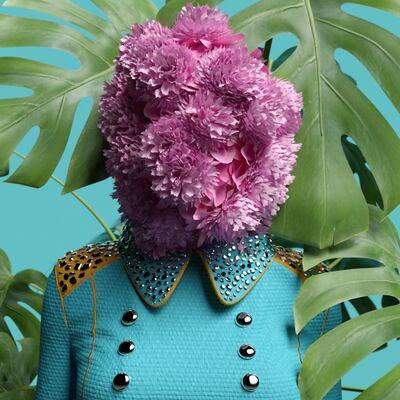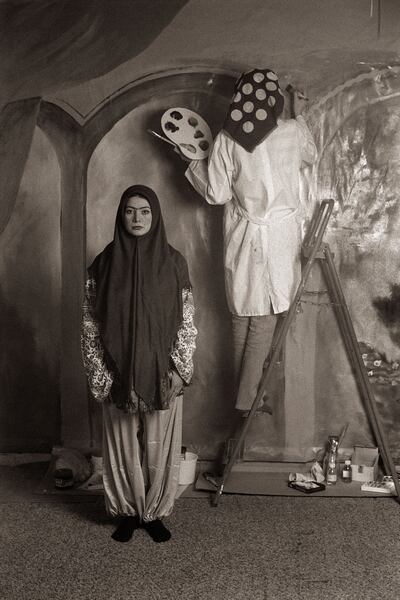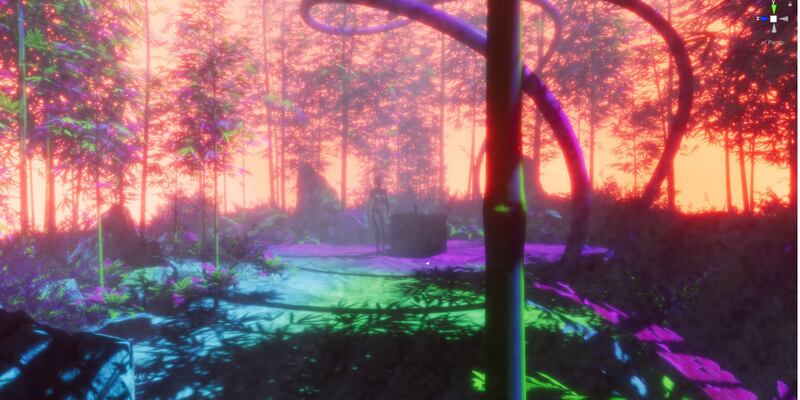An art gallery exhibiting physical non-fungible tokens (NFTs) is the latest addition to the UK capital’s resurgent art scene.
One of the first physical spaces dedicated to NFTs in Europe, The NFT Gallery opened its doors in Mayfair district on Thursday to several art and technology enthusiasts in London’s “post-coronavirus” creative social scene.
Technology entrepreneurs and founders Lynn Rosenberger and Lilien Hornung-Mary chose an all-female cast of NFT creators for their inaugural exhibition, Surface Tension, because they wanted to “show that there was a space for women in art-tech”.
“Women are notoriously underrepresented in this space,” Ms Hornung-Mary told The National on launch night, in a room surrounded by the digital works from five international female artists on display.
A self-confessed “tech geek”, Ms Hornung-Mary says the co-founders have a “mission to bring women into this arena” and show the world what they are capable of.
“Female artists are underrepresented in galleries and private homes, and we want to change that by giving them the space to be shown and to grow,” she says.

A 2019 study conducted by ArtNet found that of the more than $196.6 billion spent at auctions on art in the past decade, the works of women accounted for only $4 billion — about 2 per cent.
Graduates of the Istituto Marangoni school of fashion, Ms Hornung-Mary and Ms Rosenberger are both avid Web3 industry enthusiasts and have already founded a fashion technology start-up together.
Displaying the “big potential” of women in the art technology space is why their first exhibition is “female-first”. However, the NFTs on sale will not always be gender-focused.
“We want to disrupt the industry, of course, but our aim is to be a conduit between the legacy art collecting world and the new digital era of creative expression,” the founders say.
NFTs — unique virtual assets that are generally used to represent works of art and collectibles — have leaped to the forefront of the digital world in the last two years.
According to a report released in May by Chainalysis, NFTs worth more than $37 billion have been sent to marketplaces this year, approaching the $40bn recorded for all of 2021.

Sale prices of $1 million or more for an NFT have become common, with a record-breaking $69 million spent at Christie’s on an NFT by the artist named Beeple last year.
“Some people may think that it is ridiculous to pay so much for items like a luxury bag or digital art but that is a matter of perspective,” says Ms Hornung-Mary. “You have to understand the value of an NFT.”
Prices for digital assets at the inaugural exhibition were far less eye-watering, with pieces ranging between £100 and £10,000.
Buyers can purchase their NFTs using both cryptocurrency and fiat currency, or regular money, with the sales recorded on a blockchain — a digital ledger of transactions.
During exhibitions, visitors can use their phones to scan QR codes or place a bid online. Collectors have the option to purchase a TokenFrame to display the NFTs in their own space.
As the market continues to heat up, The NFT Gallery’s opening in one London’s most affluent areas makes for a promisingly lucrative endeavour for both collectors and speculators.
The aim is to lure Web3 buyers with a tangible space for collectors to “experience” the inherently intangible art.
“We are the window into the metaverse and Web3,” says Ms Hornung-Mary. “We want to make digital art more accessible and to educated people.”
On one level of the 270-square-metre gallery spread over two floors is a dedicated learning area where visitors can learn about art and the crypto space.
Panel discussions, workshops and other “ed-hub” events are all part of their other “mission” to “educate and bring people into the metaverse”.

The dual focus on “curation and education” may be what sets the founders apart from a number of physical NFT art spaces that have begun to pop up globally.
Nevertheless, today’s exponential NFT boom, coupled with an increasingly volatile cryptocurrency market, has raised questions about the longevity of the run and whether a bust is on the horizon.
“The market is fluctuating but it is new, it is exciting and a little unpredictable. But all new things need to stabilise themselves,” says Ms Hornung-Mary.
“But I also think it depends if education is going to be part of it. There are so many possibilities to NFTs and their technology, and I think we are moving into a space where a lot more social platforms from the Web2 space will be using digital collectibles.”








